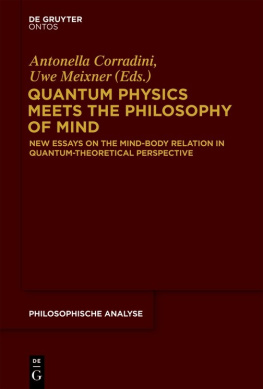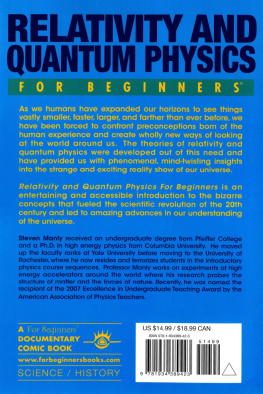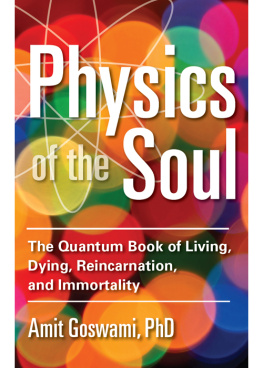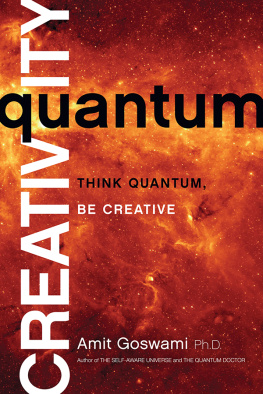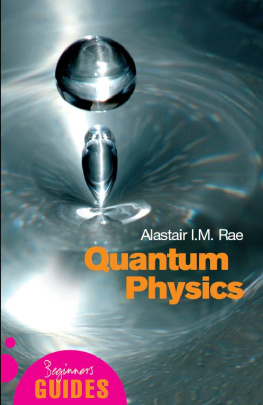Henry P. Stapp, University of California at Berkeley, USA
Henry P. Stapp
1 Introduction
The question before us is whether quantum mechanics can help solve the problems of philosophy of mind.
I believe it can, and my talk will explain how.
What are these problems? They are tied to the ideas of classical physics that prevailed in science during the eighteenth and nineteenth centuries, and were eloquently described by the great 19 th century physicist John Tyndall (1874):
We can trace the development of a nervous system and correlate it with the parallel phenomena of sensation and thought. We see with undoubting certainty that they go hand in hand. But we try to soar in a vacuum the moment we seek to comprehend the connection between them [] Man as object is separated by an impassable gulf from man as subject. There is no motor energy in intellect to carry it without logical rupture from one to the other.
If there is, indeed, such an impassable gulf, then a primary question is: On which side do we lie?
The belief of most contemporary neuroscientists, and philosophers of mind, is that we lie on the physical side: and that our conscious experiences must therefore be built out of the material stuff of our bodies, and, more specifically, of our brains or nervous systems.
That conclusion draws its scientific support from the principles of classical mechanics, which claimed that the behavior of our bodies could be completely explained without ever mentioning or considering our conscious thoughts, ideas, and feelings.
Huge efforts have been made to understand, rationally, how man as subject can arise from the material stuff of classical mechanicshow something like the motions of bouncing billiard balls could be , or produce , a conscious thought. But many scientists and philosophers now agree that no progress at all has been made in resolving that classical-physics-based mystery.
Sir Karl Popper described the current mainline view in neuroscience as promissory materialism: with the promise being that dogged adherence to the principles of classical mechanics will eventually lead to an understanding of consciousness.
Classical mechanics was, however, found during the twentieth century to be incompatible with a growing host of empirical findings, and was replaced at the fundamental level by quantum mechanics. A key innovation of the new theory was to bring our conscious thoughts into the theory as logically essential parts of the basic underlying dynamics . This quantum approach leads, via the orthodox formulation of John von Neumann (1955), to a clean ontological separation between our mental and physical aspects, which, however, become tied together by a dynamical connection. John Tyndalls nineteenth century impassable gulf has thus been bridged, during the twentieth century, by replacing an empirically invalid classical physics by empirically valid quantum physics!
But how did such a radical change in the foundations of physics come about?
2 The original Copenhagen version of quantum mechanics
Early in the twentieth century a series of theoretical and experimental findings showed that the classical principles that work so well for large astronomical and terrestrial objects, fail to work for their atomic constituents! A new set of laws was found to hold for the atoms. But if we try to apply these atomic laws to the atomic constituents of us human observers, then we usually find that what we experience is altogether different from what the atomic theory predicts!
Specifically, the atomic laws generally entail that the brain of an observer will naturally evolve into a mixture of many different quantum components, each of which corresponds to a different perceptual experience. Yet only one of these perceptions occurs in any actual empirical instance. Consequently, the atomic theory, understood in the ordinary traditional way, fails to agree with experience.
The founders of quantum mechanics resolved this conflict between the atomic laws and human experience by abandoning the conceptual framework that Isaac Newton had created in the seventeenth century. That classical way of thinking had, for more than two centuries, been accepted by scientists as the proper foundation of science. But that approach excluded, as a matter of basic principle, any irreducible effect of our conscious thoughts on the behavior of the physically described aspects of the universe.
Orthodox quantum theory revokes that exclusion! It converts our conscious experiences from passive spectators to active participants in the creation of our future experiences.
The rational foundation of the new approach was the demand by the creators of quantum mechanics that science be anchored in what we know. But everything we know resides in our experiences. Hence the founders backed away from the idea that the aim of science is to comprehend the reality that lies behind our experiences . They focused instead on the structure of our experience itself.
In the words of Niels Bohr:
In our description of nature the purpose is not to disclose the real essence of phenomena but only to track down as far as possible relations between the multifold aspects of our experience (1934, 18).
Quantum theory was, therefore, originally offered not as theory of reality, as defined in some abstract classical sense. It was presented, rather, as a practical tool for making predictions about our future experiences on the basis of information derived from our past experiences. Thus human experiences became the basic realities of the theory: the basic realities were shifted from the objective to the subjective side of Tyndalls impassable gulf .
In this pragmatic approach, we observers arein order to make the theory useful to usrepresented within the theory in the way that we intuitively conceived ourselves, namely as psycho-physical agents that can form intentions based on our own reasons, emotions, and values, and can then physically act to implement those intentions. Von Neumanns orthodox formulation of the theory integrates these features into a rationally coherent understanding of nature itself, and our place within it.
In quantum theory our mental intentions are freely chosen, in the sense that they are not determined within the theory by prior physical properties. Thus these intentions are allowed by the theory, in its orthodox realistic version, to depend irreducibly on consciously felt values that are described in psychological rather than in physical terms! That means that quantum theory violates a core idea of classical mechanics: it allows our mental free choices to influence our physical actions, yet not be fully determined by prior physically describable properties. Thus the philosophy-of-mind concept of physicalism fails: the demand that all is physical is not only not entailed be contemporary basic physics; it is also strictly incompatible with the orthodox realistic formulation of it.

